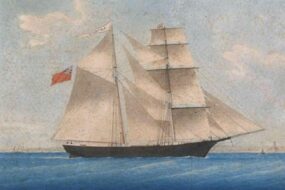
The Forgotten emperor: Unveiling the Mystique of China’s Last Great Dynasty’s Fall
Imagine a world where the mighty dragon throne of China, once held by emperors revered as gods, was shaken to its foundations by a series of catastrophic events that would shake the very fabric of a 2,000-year-old imperial system. On a fateful day in October 1911, in the city of Wuchang, a rebellion began that would not only topple the last great Chinese dynasty, the Qing, but also mark the end of an era that had seen the rise and fall of countless empires, witnessed the construction of the Great Wall, and beheld the splendor of the Forbidden City. The question on everyone’s mind: what led to this monumental collapse, and how did it reshape the course of Chinese history forever?
The Qing dynasty, founded by the Manchu people from northeastern China, had been on the throne as 1644, a period marked by both grandeur and decline. By the late 19th century, the qing court was grappling with internal strife, corruption, and the challenges posed by foreign invasions and the humiliating concessions forced upon China by Western powers. The once-mighty empire was crumbling under the weight of its own inefficiencies and the relentless pressure of modernity knocking on its doors. Empress Dowager Cixi, a figure of immense power and influence, had steered the dynasty through turbulent times, but her death in 1908 left a power vacuum that would prove catastrophic. The throne was inherited by the two-year-old Puyi, with his father, Zaifeng, acting as regent. However, this fragile setup was incapable of addressing the empire’s deepening woes.As the 20th century dawned, the winds of revolution were sweeping across China. The influence of the Tongmenghui, a revolutionary alliance led by Sun Yat-sen, was spreading like wildfire, advocating for the overthrow of the Qing and the establishment of a republic. The seeds of rebellion were sown in the fertile grounds of discontent among the Chinese populace, who were increasingly frustrated with the Qing court’s inability to modernize and protect the nation’s sovereignty. The stage was set for a confrontation between the entrenched imperial system and the burgeoning forces of revolution.
the spark that ignited the powder keg was a mutiny among the troops in Wuchang on October 10, 1911. Initially, a bomb-making operation gone wrong drew the attention of the authorities, leading to the arrest of several revolutionaries. Fearing that their plans would be exposed,the revolutionaries decided to act preemptively,launching a surprise attack on their commanders and seizing key positions in the city. The success of this uprising was not just a testament to the planning and bravery of the revolutionaries but also a reflection of the widespread disillusionment with the Qing rule. As news of the Wuchang Uprising spread, it inspired similar rebellions across the country, with province after province declaring independence from the Qing dynasty.
The fall of the Qing was as swift as it was shocking. by the end of 1911, the empire was on the brink of collapse, with the revolutionaries gaining ground and the imperial court’s control weakening by the day. In a desperate bid to salvage the situation, the qing court called upon the highly respected Yuan Shikai, a military leader with considerable influence, to quell the uprising. However, instead of saving the dynasty, Yuan maneuvered himself into a position of power, negotiating with both the revolutionaries and the imperial court to his advantage. The outcome was the abdication of Puyi, the last emperor, in February 1912, marking the end of over 2,000 years of imperial rule in China.
Some key factors that contributed to the fall of the Qing dynasty include:
Internal decay: Corruption, eunuchism, and a lack of modernization had weakened the empire from within.
External pressures: Foreign invasions,unequal treaties,and the influence of Western powers had humiliated the Qing court and eroded its legitimacy.
Rise of revolutionary movements: The Tongmenghui and other revolutionary alliances had spread their influence, advocating for the overthrow of the Qing and the establishment of a republic.
The aftermath of the Qing dynasty’s collapse was a period of tumultuous transition. China was plunged into a chaotic era of warlordism, as regional military leaders vied for control, and the young republic struggled to assert its authority. Sun Yat-sen, who had been instrumental in the revolution, briefly took the reins as the provisional president of the new Republic of China, but his tenure was short-lived, overshadowed by the rise of Yuan Shikai, who would eventually declare himself emperor, albeit briefly, before his death in 1916. The vacuum left by the Qing’s collapse would take decades to fill, with China experiencing civil war, foreign invasion, and eventually, the rise of the Communist Party under Mao Zedong.The legacy of the Qing dynasty’s fall is multifaceted and profound.it not only marked the end of an era but also set China on a path of radical transformation. The period that followed was characterized by a quest for identity, as china navigated the complexities of modernity, sought to redefine its place in the world, and struggled to reconcile its rich imperial past with the demands of the modern nation-state. The story of the Qing’s downfall is a testament to the power of change and the enduring spirit of a nation that, despite facing unprecedented challenges, continues to forge its path forward.
the story of the last emperor, Puyi, would become the stuff of legend, immortalized in Bernardo Bertolucci’s film “The Last Emperor,” which captured the tragic fate of a monarch who was reduced from a divine ruler to an ordinary citizen, struggling to come to terms with the loss of his empire and his identity.Puyi’s life, marked by attempts to reclaim his throne and his eventual redemption through labour and reeducation under the communist regime, serves as a poignant reminder of the human cost of historical upheavals.
In the years that followed, China would experience a tumultuous period of transition, marked by:
Warlordism: Regional military leaders vied for control, plunging the country into chaos and fragmentation.
Civil war: The Nationalist Party and the Communist Party clashed in a series of conflicts that would shape the course of modern Chinese history.
Foreign invasion: Japan’s invasion of China in 1937 would led to a period of occupation and resistance, ultimately contributing to the Communist Party’s rise to power.
#InfographicStory #ChineseHistory #QingDynasty #LastEmperor #Puyi #FallOfEmpires #HistoricalEvents #DidYouKnow #TrueStory #historynerd #GlobalFigures #Revolution #republicofchina #WarlordEra #ModernChina #LegacyOfThePast








